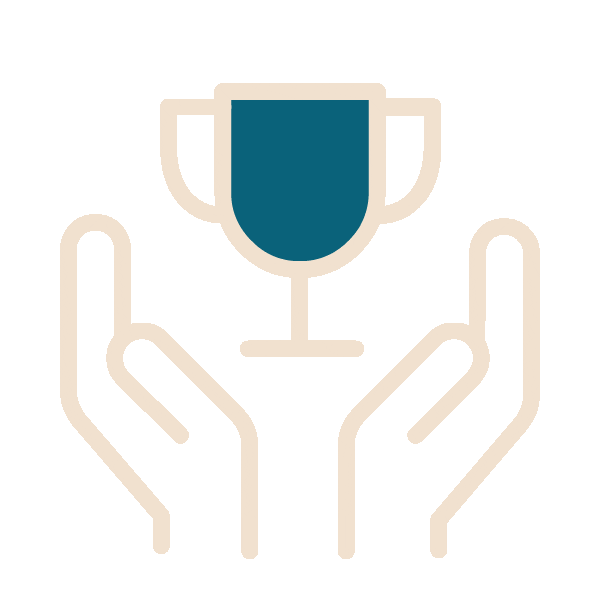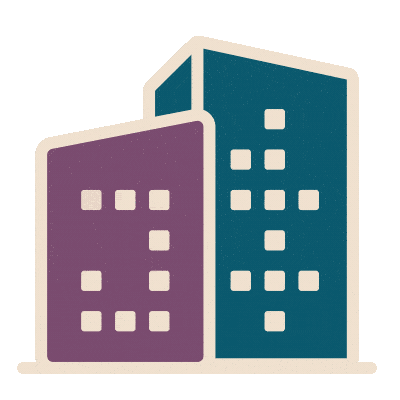Elevating Sensory Awareness to Support Higher-Performing Organizations and Workplaces
IWBI sits down with Annemarie Lombard, who is leading groundbreaking work to leverage sensory intelligence to boost employee health, well-being and performance
Annemarie Lombard’s journey from a seasoned occupational therapist working with children to a pioneering entrepreneur and founder of Sensory Intelligence Consulting reveals a narrative rich with challenges, innovation and profound personal growth.
In the late 1990s, after an influential work experience in the U.S., Annemarie returned to South Africa and decided to start her own company with a vision to change how sensory processing is understood in both children and adults. Her insights, initially nurtured in a clinical setting, evolved into a framework aimed at enhancing individual and organizational performance through greater sensory awareness, which is focused on better understanding how our sensory inputs affect everything from mood to productivity.
Annemarie’s academic endeavors, coupled with her real-life experience, including her husband’s battle with cancer and her own struggles with post-natal depression, have imbued her with a unique perspective on resilience and personal development. Her book, “Sensory Intelligence: Why It Matters More Than IQ and EQ,” helped established her as a leading voice in the field, integrating her clinical expertise with practical applications for everyday life. Today, her ability to distill complex concepts into accessible, actionable knowledge has made her a sought-after expert and speaker, as well as garnering industry accolades and awards.
As demand for her expertise continues to grow, Annemarie is bringing a powerful message for all those exploring the intersection between our senses and our environments — attuning more closely to our senses can lead to transformative changes for all.
Pictured with Ken Fong of E-LAB Consulting and Dr. Richard Carmona, 17th Surgeon General of the U.S., at the 2024 WELL Conference
Q: Tell us more about your personal journey and how you were inspired to launch Sensory Intelligence in 2000?
A: It was a combination of both personal dilemmas and professional unsettlement. From a personal point of view, my first son was born in 2000 and I struggled with a mild form of post-natal depression. Being a new mom was unfamiliar and hard. At the same time, having just returned from the U.S. after working in Iowa, New Jersey, South Carolina and California for 3 years, I was personally unsettled. It took me about 6 months to figure out where I was - I felt like I had one foot in the US and one foot in South Africa. My sense of belonging was gone and I felt floating between two continents. I struggled to integrate back into clinical practice and at the same time was bored with the daily repetition of that practice. I was professionally unsettled. Then I was invited to deliver training for South African occupational therapists as part of their sensory integration training which was a key “aha” moment for me.
I immediately loved the training space, telling stories and sharing insights. It was the springboard for me to start sharing sensory stories, insights and experiences with my adult clients, away from the clinical practice of treating children in a one-to-one setting. I then started the business doing parenting workshops and empowering parents to manage their kids but also themselves better through what I called a sensory intelligence® framework. As they say, the rest is history. My book, PhD and work to bring sensory intelligence to wider audiences started to take off from there.
Q: Through your work, you have created a series of tools to help drive innovation in sensory assessment. What are those tools and how is that work helping organizations improve health and well-being?
A: Our tools are mostly self-assessments for people to measure their sensory processing style which is part of our genetic DNA. This enables and empowers people to improve their health, wellbeing, productivity and relationships using a sensory intelligence® framework. Our approach is deeply embedded in research and science while providing personal insights and bottom-up self-regulation strategies.
We currently have three main self-assessment tools available. One is our Sensory Matrix™, a 120-item self-assessment that measures sensory thresholds across visual, auditory, touch, smell, taste, movement and multisensory channels. It’s our flagship tool, and creates very rich, yet easy insights and strategies to adapt home, work and life environments for improved health and wellbeing. Our popular sensory snacks, sensory diets and sensory ergonomics are woven into the feedback report to make implementation and adaptation easy and effective.

A second tool is Senses@Work™, which is a 60-item semantic differential (sliding scale) that measures sensory thresholds across the same systems but in a shortened format. It provides a condensed 11-page report providing sensory insights and guiding people towards practical solutions to increase workplace productivity. And lastly, we have our Senses on Call™assessment, which is the same 60-item semantic differential (sliding scale) test but the reporting focuses specifically on the call center industry. It helps guide call centre leaders in getting the right people into the industry, allocating the best-fit roles, and seating and management approaches. With high absenteeism and attrition rates as common industry hurdles, Senses on Call™ provides an alternative and innovative method to optimize people in call centers.
Overall, these tools can help organizations to boost their productivity and well-being. Moving forward, we are looking into developing more assessment tools, including a sensory tool designed for kids.
Q: Please share one of the success stories where your work helped transform a workplace environment?
A: We worked with a small, medium enterprise in the financial industry moving their business model from a typical office into a remote working space. We guided the organization through our sensory intelligence® self-assessments, training and consulting to build a culture of high performance and excellence. We were able to measure 14 key performance indicators, and found they had a collective improvement of 129.4% comparing pre- and post-employee surveys. Their time management skills improved by 12%, employee satisfaction levels increased by 20%, business communication improved by 9%, correct task allocation improved by 31% and people were 5% better at keeping schedules. We are still involved with this client, 4-years running, and their business has expanded exponentially with staff and revenue growth. You can see more case studies on our website.
In the end, we take a very personalized approach and have a real gift for understanding our client’s needs and aligning our sensory intelligence® approach to help them make sustainable shifts.
Q: Looking forward, how do we make more progress to increase awareness about the importance of our sensory inputs, and what makes you most optimistic about the opportunities ahead
A: Such a nice question! When I started this journey in 2000 no one was into any of this. As a lone maverick, I asked questions, spoke to many people, collected sensory stories and spent years behind my computer figuring out sensory intelligence® in my mind. So many people commented on the fact that I was ahead of the curve. Traditionally, awareness and the importance of sensory inputs were considered in how children learn and grow, particularly in occupational therapy.
Today, there is a much greater awareness of sensory processing, throughout all ages and various industries. There is a very welcome and innovative shift in workplace design and considering the sensory elements thereof. Neurodiversity and diversity, equity and inclusion (DEI) initiatives also have forced organizations to become more proactive, which has helped. However, we still have a large education task to expand the awareness and importance not only for neurodiversity but in ALL humans and ALL workspaces.
We have always aimed to be inclusive and expansive in our approach. While we believe sensory intelligence® can help people with neurodiversity, our focus has been much larger than this. EVERYONE can and should understand their sensory wiring as it enables anyone to make better decisions towards improved health, wellbeing, productivity and relationships. It has changed my personal life, my teams and our clients. But the journey is still in its infancy. We are also training the trainer and other practitioners to understand and embrace this very fundamental, unconscious yet powerful part of how the human brain works and interacts with the environment.







